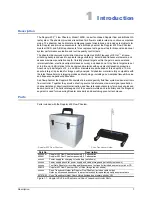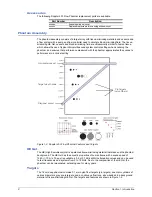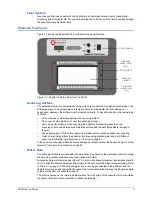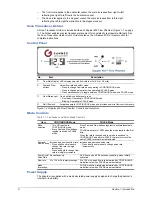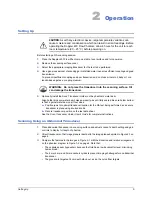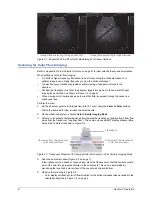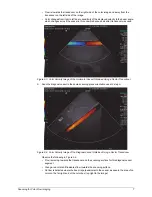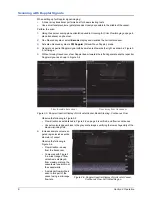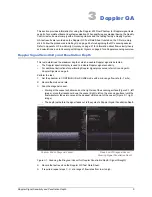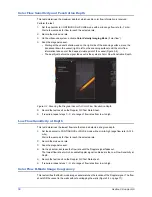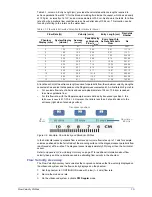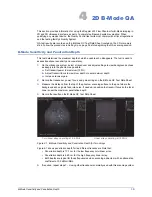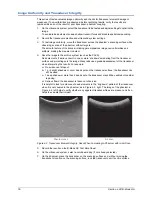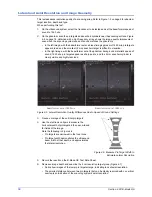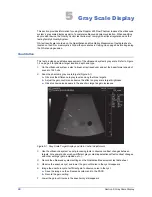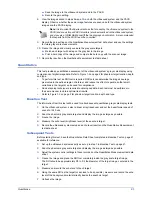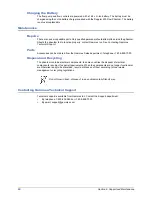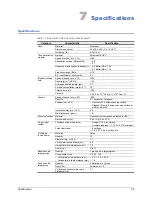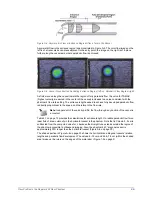
B-Mode Sensitivity and Penetration Depth
15
4
2D B-Mode QA
This section provides information for using the Doppler 403 Flow Phantom for B-Mode imaging in
2D and 3D ultrasound systems, as part of a complete ultrasound system evaluation. When
qualifying any medical device, the Quality Control test suite must comply with all local regulations
and the testing facility’s Quality System.
QA test results are recorded on the B-Mode QC Test Data Sheet, located on the CD or memory
stick. Follow the procedures in
on page 5 before beginning the QA scanning session.
B-Mode Sensitivity and Penetration Depth
This test determines the maximum depth at which a usable echo disappears. The test is used to
assess transducer sensitivity and consistency.
1
On the ultrasound system, select a transducer and adjust settings to view background echoes
as deeply into the phantom as possible:
a.
Set transmit power to maximum (100%).
b.
Adjust transmit focus to maximum depth or near maximum depth.
c.
Increase receiver gain.
2
Record the transducer, power, focus, and gain settings on the B-Mode QC Test Data Sheet.
3
Measure the distance from the top of the phantom scanning surface to the point where the
background echo signals fade into noise. If needed, reposition the transmit focus so the focal
zone is near the maximum penetration depth.
4
Record the results on the B-Mode QC Test Data Sheet.
Figure 4-1. B-Mode Sensitivity and Penetration Depth for Two Arrays
Figure 4-1 shows penetration depth for two different transducers. Note that:
• Penetration depth is 17.7 cm for the low frequency curvilinear array.
• Penetration depth is 6.45 cm for the high frequency linear array.
• Both depths are typical for these frequencies when scanning a phantom with an attenuation
coefficient of 0.5 dB/cm/MHz.
5
If required, repeat steps
-
using other transducers normally used with this scanning system.
Curvilinear array operating at 5.5 MHz
Linear array operating at 15 MHz

